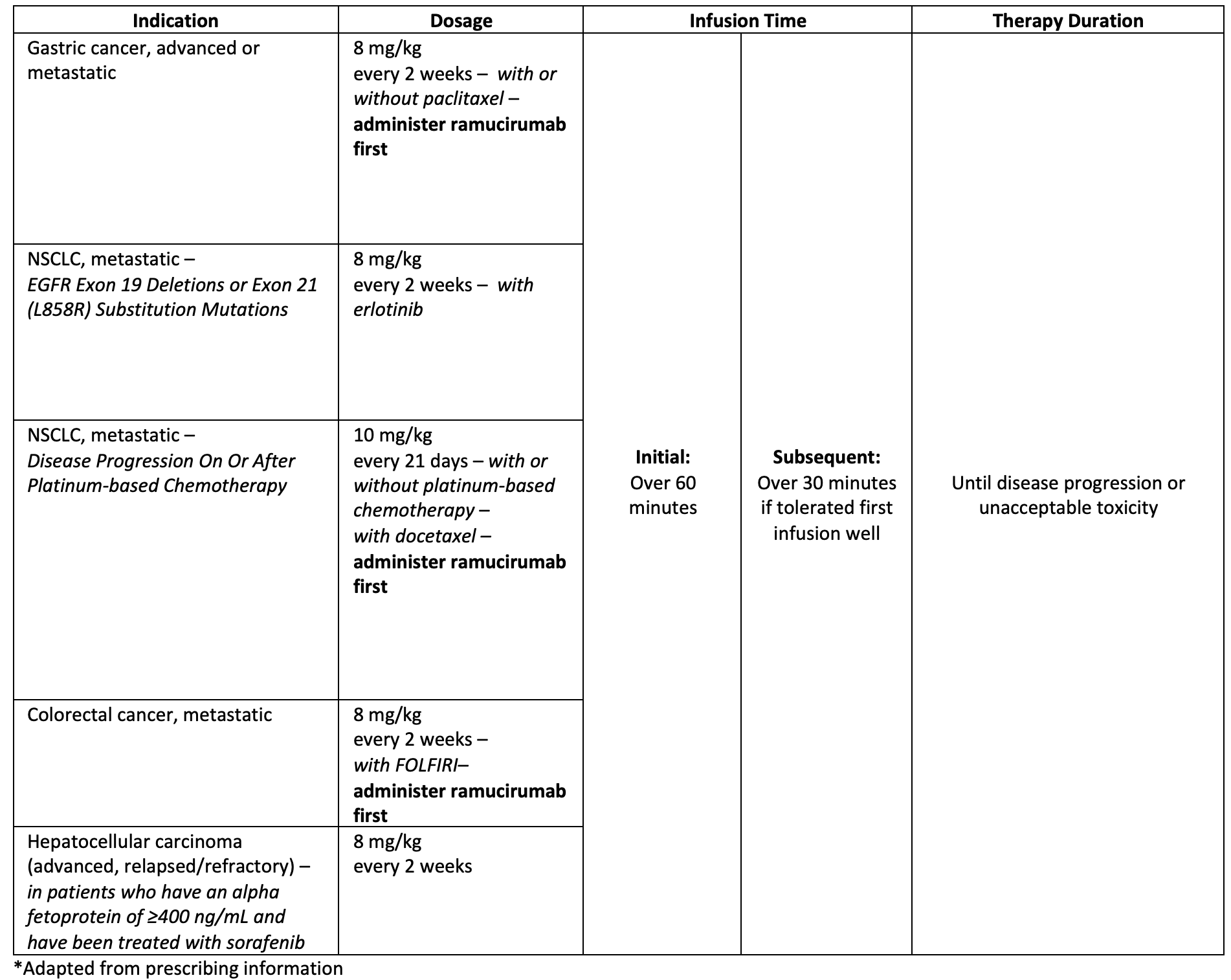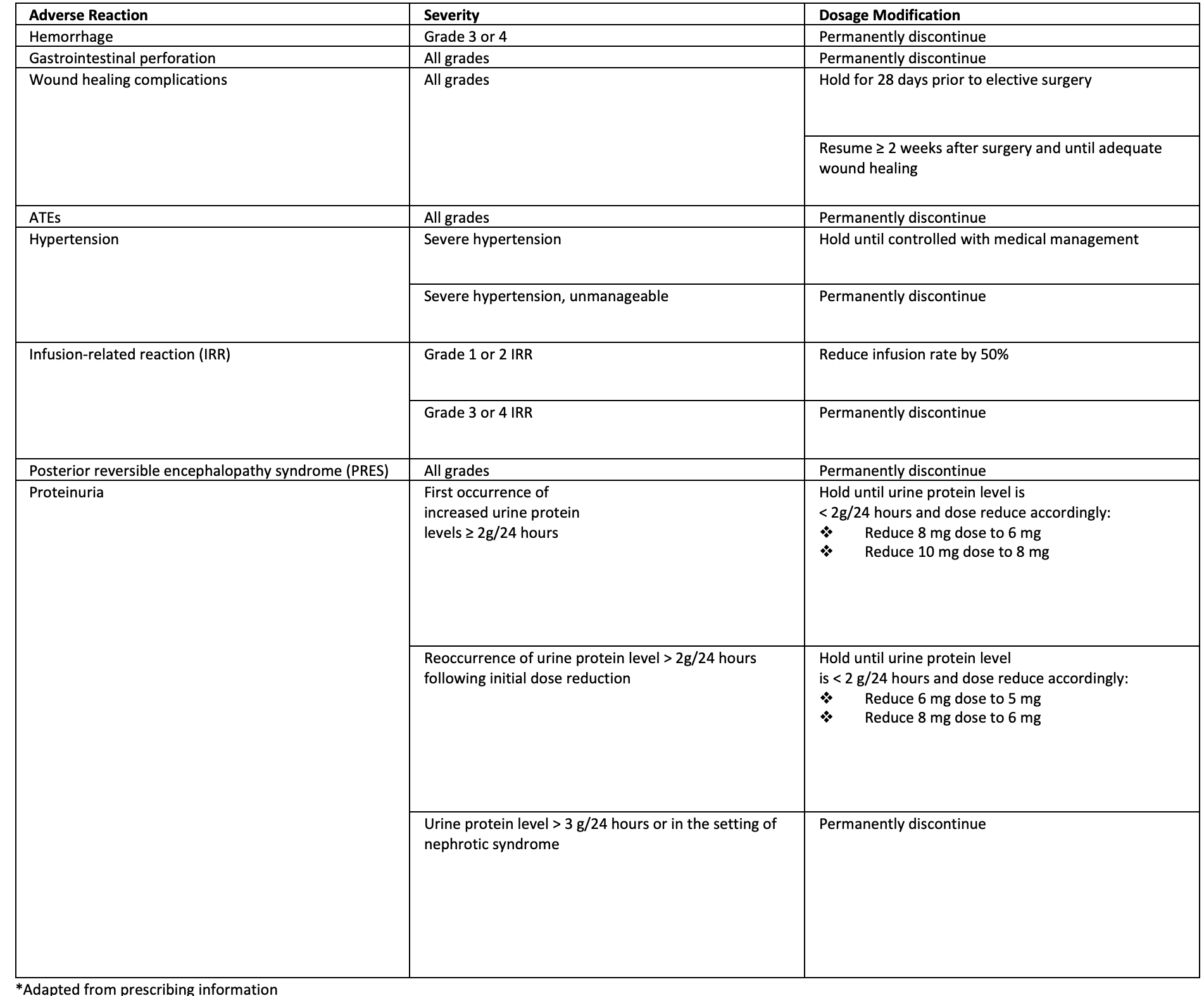Article
Oncology Overview: Examining the Clinical Utility of Ramucirumab Targeted Therapy
Author(s):
Ramucirumab (Cyramza; Eli Lilly) is FDA-approved for 5 unique cancer indications.
Ramucirumab (Cyramza; Eli Lilly) is a targeted therapy that is FDA-approved for 5 cancer indications,1 with the most recent approval for use in combination with erlotinib for the first-line treatment of metastatic non-small cell lung cancer (NSCLC) with epidermal growth factor receptor (EGFR) exon 19 deletions or exon 21 (L858R) mutations.3
Altogether, lung, colorectal, liver, and gastric cancers accounted for an estimated 6.7 million new cases in 2020 and were responsible for more than 4.8 million total deaths in 2020 alone.4 Treatment with ramucirumab may help patients with these malignancies.
Indications
The FDA approved ramucirumab on April 21, 2014, for use as monotherapy for patients with advanced or metastatic, gastric or gastroesophageal junction (GEJ) adenocarcinoma with disease progression on or after prior treatment with fluoropyrimidine or platinum-containing chemotherapy, such as 5-FU or oxaliplatin.2 The approval was based on the phase 3 REGARD trial (NCT00917384), which showcased that in the presence of the best supportive care, fewer ramucirumab-treated patients died (75%) than with placebo-treated patients (85%) ([HR], 0.776; 95% [CI], 0.603-0.998; P = 0.047).2
Ramucirumab received its most recent and encouraging approval by the FDA on May 29, 2020, for use in combination with erlotinib for first-line treatment of metastatic NSCLC with EGFR exon 19 deletions or exon 21 (L858R) mutations.3 The phase 3 RELAY trial (NCT02411448) found that treatment with ramucirumab plus erlotinib significantly prolonged median progression-free survival (PFS) compared with erlotinib alone (19.4 vs 12.4 months; ([HR], 0.59; 95% [CI], 0.46-0.76]) at a median follow-up of 20.7 months (N=449).3
Additional cancers treated by ramucirumab includes the following:
- Metastatic colorectal cancer
- Metastatic NSCLC (with disease progression on or after platinum-based chemotherapy)
- Advanced or relapsed/refractory hepatocellular carcinoma
Ramucirumab has also received orphan drug designation for the treatment of both gastric cancer and hepatocellular carcinoma.1,2
Mechanism of Action
Ramucirumab is an immunoglobulin (Ig) G monoclonal antibody that works by binding to and inhibiting the vascular endothelial growth factor receptor 2 (VEGFR2). This inhibits VEGF-mediated tumor angiogenesis and subsequently decreases tumor blood supply.1
Dosage and Administration
Ramucirumab is dosed based on body weight, administered by intravenous (IV) infusion over 30 or 60 minutes, and the treatment frequency depends on the indication (see Table 1).1 Ramucirumab can be administered in combination with paclitaxel, erlotinib, docetaxel, or FOLFIRI (fluorouracil, leucovorin, and irinotecan).1
Table 1: Ramucirumab Dosing1

Warnings, Precautions, and Patient Counseling Points
Ramucirumab can cause severe, potentially fatal complications involving bleeding, impaired wound healing, gastrointestinal perforation, arterial thromboembolic events (ATEs), and hypertension. Ramucirumab can be associated with fatigue, asthenia, stomatitis, mucosal inflammation, anorexia, diarrhea, epistaxis, rash, and infusion-related reactions. Pharmacists must monitor and educate their patients about ramucirumab’s drug-related risks and adverse effects (AEs).
In the presence of AEs, pharmacists recommend treatment adjustments to ensure patient safety (see Table 2).
Table 2. Dosage Modifications for Ramucirumab1

Pregnancy and Lactation
No data are available on the use of ramucirumab in pregnant women; however, animal models suggest compounds that target the VEGF receptor(s) and impact angiogenesis, such as ramucirumab, may be associated with developmental abnormalities. Clinicians should inform women of reproductive potential about the possible risk of fetal harm. Instruct patients to notify their health care providers of a known or suspected pregnancy and to use effective contraception during ramucirumab treatment and for 3 months after the last dose.1
Conclusive data on whether ramucirumab can cross into breast milk or its potential for unintended effects on the child are lacking. Patients should be counseled to avoid breastfeeding during treatment and for 2 months after the last dose.1
About the Author
Robert Mown, PharmD, is a pharmacist and the Sterile Products Coordinator at St. Vincent’s Medical Center in Connecticut.
References
1. Ramucirumab. Prescribing information. Eli Lilly and Company; 2021. Accessed November 26, 2021. https://pi.lilly.com/us/cyramza-pi.pdf
2. Lilly's CYRAMZA™ (ramucirumab) Becomes First FDA-Approved Treatment for Advanced Gastric Cancer After Prior Chemotherapy [News release].FDA. April 21, 2014. Accessed November 26, 2021. https://investor.lilly.com/news-releases/news-release-details/lillys-cyramzatm-ramucirumab-becomes-first-fda-approved
3. FDA approves ramucirumab plus erlotinib for first-line metastatic NSCLC [News release].FDA. June 1, 2020. Accessed November 26, 2021.https://www.fda.gov/drugs/drug-approvals-and-databases/fda-approves-ramucirumab-plus-erlotinib-first-line-metastatic-nsclc
4. Sung, H, Ferlay, J, Siegel, RL, Laversanne, M, Soerjomataram, I, Jemal, A, Bray, F. Global cancer statistics 2020: GLOBOCAN estimates of incidence and mortality worldwide for 36 cancers in 185 countries. CA Cancer J Clin. 2021: 71: 209- 249. https://doi.org/10.3322/caac.21660
Newsletter
Stay informed on drug updates, treatment guidelines, and pharmacy practice trends—subscribe to Pharmacy Times for weekly clinical insights.






